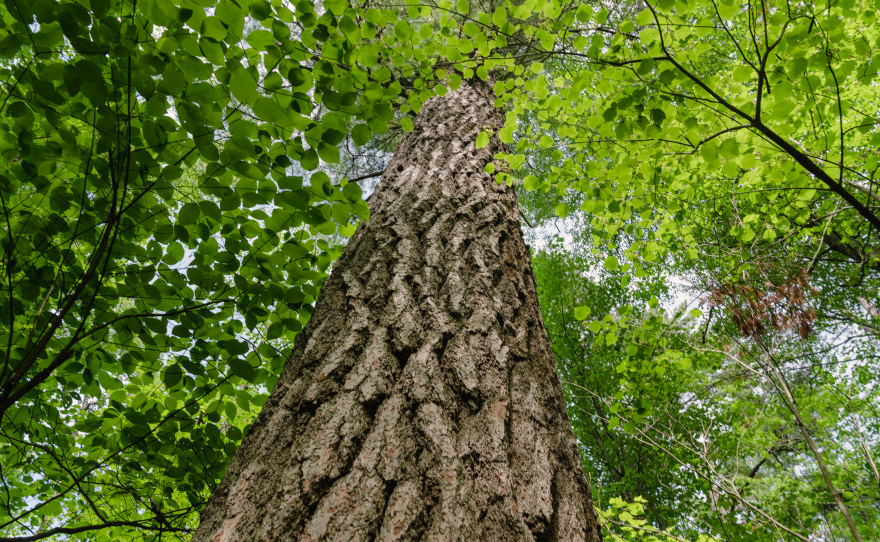In this week’s phenology report, John has his work cut out for him documenting all the plants that are emerging, flowering, and fruiting. Despite the busy schedule, John slowed down to give special attention to a few chosen plants: the swamp red currant, the tussock cottongrass, and the quaking aspen.
Inspired by his report, I fell down an aspen-research rabbit hole – please enjoy the fruits of my labors below.

Topics
- Introduction (0:00 - 0:45)
- Spring 2024 is right on schedule (0:45 - 1:52)
- Plant phenology (1:16 - 16:32)
- Forbs (1:16 – 3:51, 5:31-7:12)
- Swamp red currant (3:51 – 5:31)
- Shrubs (7:12-9:58)
- Trees (9:58-15:41)
- Fruit trees and shrubs (9:58-10:44)
- Aspen seeds and leaf-out (11:00-15:41)
- Tussock cotton grass (15:41-16:32)
- Frogs calling (16:32 – 17:16)
- Birds (17:16 – 17:22)
- Conclusion (17:22 – 18:16)
- Butterfly addendum (18:16-19:57)
How many individual trees are in an aspen grove?

While aspen groves may appear to contain dozens of individual trees, this is typically an illusion. Aspens rarely grow from seed, and most of the trees we see above ground are part of a clonal grove, each trunk emerging from a shared root system and sharing the same genetics as its neighbors.
These clonal groves, however, are stuck in one place. While some are exceptionally successful and long-lived, nothing can live forever. Eventually, the grove will be shaded out by slower-growing trees, killed off by drought, or demolished by pests.
For the species to continue, aspens must find a way to a new, more favorable habitat.
The answer, my friends, is blowing in the wind
Recently disturbed areas are the best habitat for an aspen to grow. Logged, developed, or farmed areas provide fertile habitat, with plenty of sunlight, loose soil, and few competitors. Aspens also grow well in areas cleared by wildfires, mudslides, avalanches, or other natural disturbances.
But first, the aspen must reach the disturbed area. Since roots won’t work, the aspen turns to a more conventional option: sprouting from seed. Each seed is tiny, enshrouded in a fluffy coat that easily catches the slightest breeze and dwarfs the pin-head sized seed inside. They are also incredibly light, weighing just 0.18 milligrams. (To gather a pound of them, you would need to collect 2.5-3.6 million seeds!)
This combination of lightness and large, fluffy surface area is perfectly designed to travel far on the wind, easily able to reach habitats hundreds of miles from the parent.
There is a tradeoff to this ability, though. A seed that light can’t also be well-fortified with energy reserves for the seedling. (Aspen seedlings are far less likely to survive into their second year than the better-provisioned oak seedlings. And yet, you don’t see acorns floating by on the breeze.)
Instead of providing each seed with large stores of energy, aspens have adapted to spread energy amongst hundreds of thousands of seeds. While each seed’s chance of success is infinitesimally small, just one success is all that’s needed to replace the parent and keep the population stable.
In the end, the aspen’s strategy is a numbers game: If you produce enough seeds to blanket a wide enough area, one of them is bound to land in a suitable spot. There, it can establish itself, grow, and create a new clonal grove.
The whims of a breeze
Imagine, if you will, a breezy spring day 12,000 years in the past. You’re standing in a region that will eventually be called Utah, gazing at the shrubby uplands surrounding an alpine lake. Your eye is drawn to a long, bare trough reaching well below the tree line: the telltale destruction left by a winter avalanche. Snapped trees lie in scattered piles on the mountainside. Long furrows show where rolling boulders bounced and ricocheted down the slope.
As you approach, you see the spring snowmelt has taken advantage of this easy downward course and the damp soil is patterned with thin, meandering channels where water trickled down in small rivulets.
Though you don’t see it, a magical moment is about to happen. The wind, slowed by the upturned earth, deposits a single, wispy seed on the damp soil. Its fuzzy tendrils tangle in the wet earth, holding it in place.
Basking in the sun and bathing in the water, the seed sprouts: a tiny, hairlike root wiggles into the earth, and a thin, delicate stem rises toward the sky.
When is a forest also a tree?
Roughly 12,000 years later, scientists named that tree “Pando”. With the help of sunlight, water, and good luck, that miniscule wind-blown seed grew to an estimated 13.2 million pounds. Today, Pando is the largest and heaviest organism known to western science. He is both an individual tree and a large forest which covers 106 acres – the size of 40 city blocks. He has an estimated 47,000 trunks, each sharing the same genetics and growing from the same root system.
Nature is bonkers, y’all.
That does it for this week! For more phenology, <b>subscribe</b> to our Season Watch Newsletter or visit the Season Watch Facebook page.
Funding for this project was provided by the Minnesota Environment and Natural Resources Trust Fund as recommended by the Legislative-Citizen Commission on Minnesota Resources (LCCMR).








